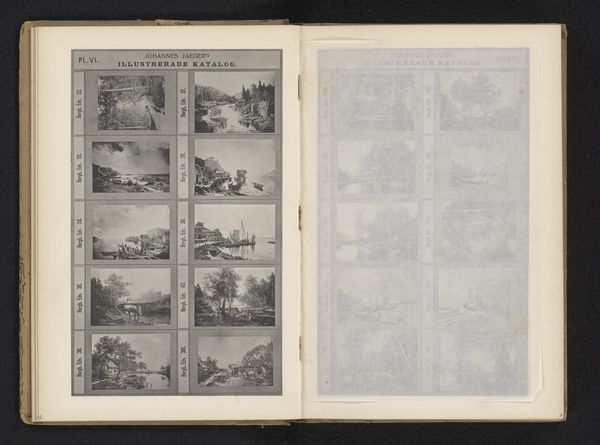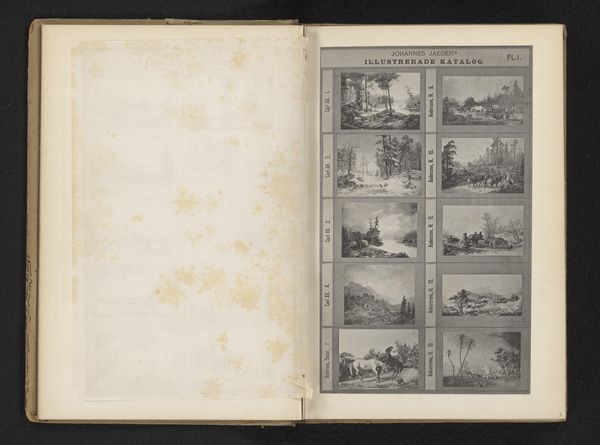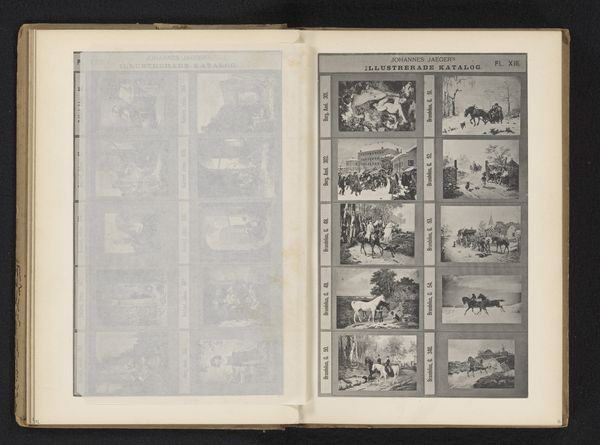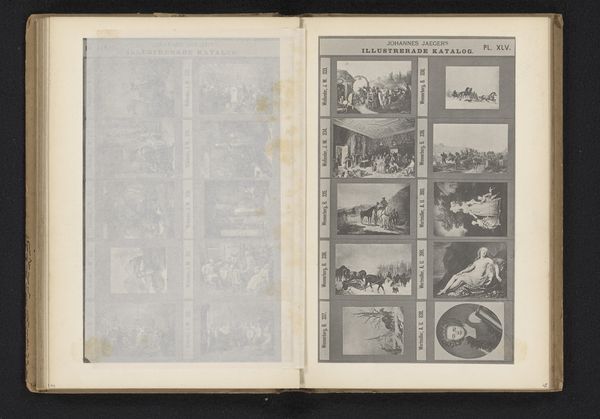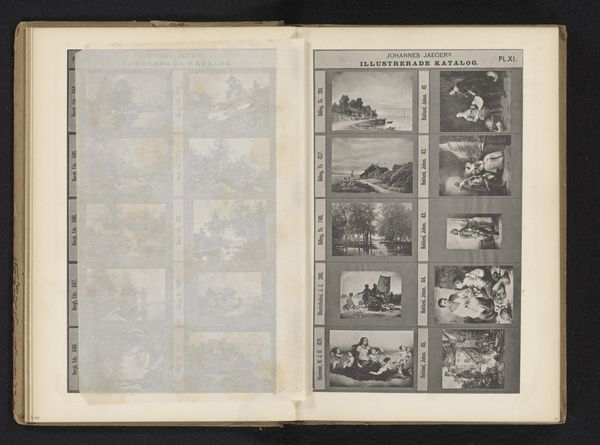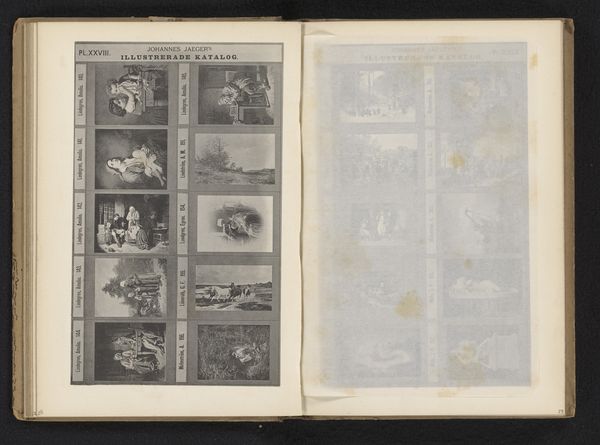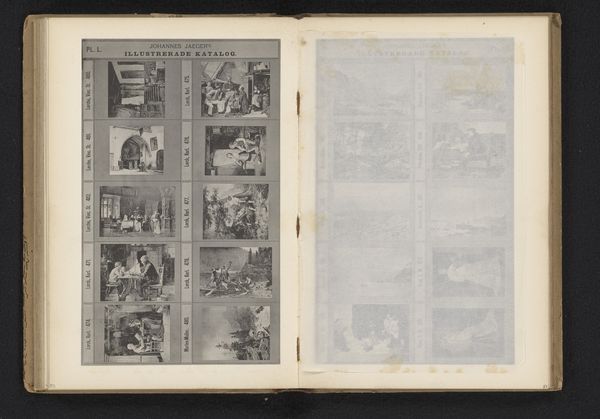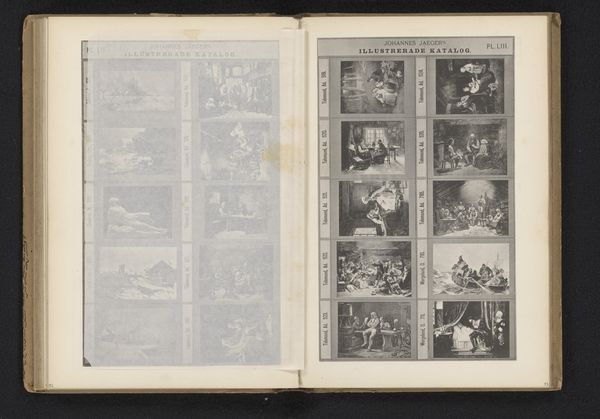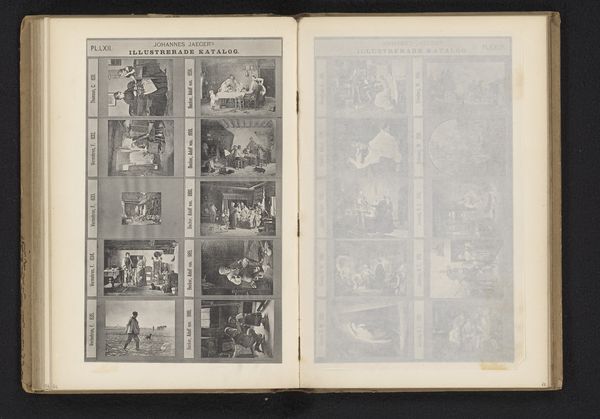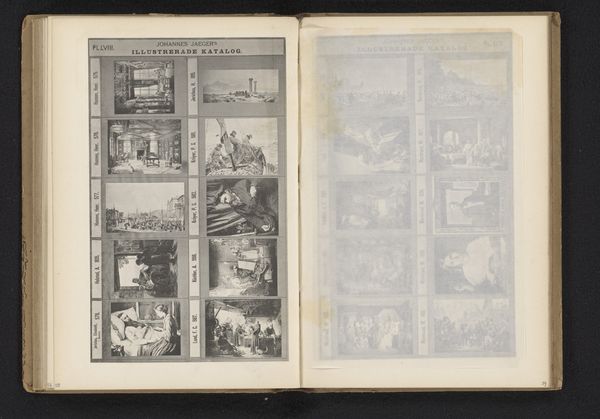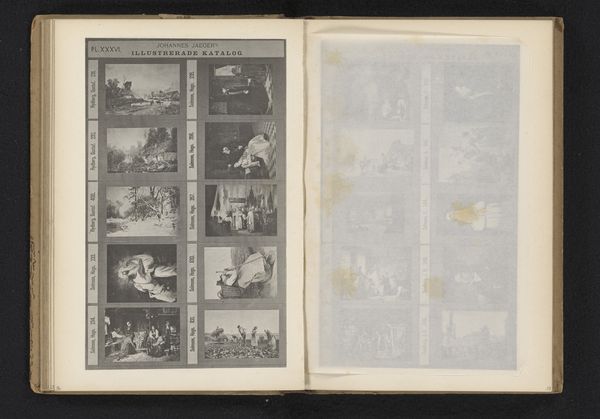
Fotoreproductie van tien schilderijen van landschappen met water c. 1872 - 1882
0:00
0:00
lithograph, print, photography
#
lithograph
# print
#
impressionism
#
landscape
#
photography
Dimensions: height 181 mm, width 111 mm
Copyright: Rijks Museum: Open Domain
Curator: This intriguing piece presents a photographic reproduction of ten landscape paintings with water, dating roughly from 1872 to 1882, by Johannes Jaeger. Initially, I am struck by the archival quality of the book, and the way images of the natural world were processed and disseminated. Editor: Immediately, the sheer number of scenes assembled in this book catches my eye. The scale diminishes the artistic intent behind each individual landscape; it’s less about a single experience and more about serial imagery, almost mass-produced and bound. How does this format impact our reading of landscapes, especially considering their materials of photography and lithography? Curator: That’s a vital point. Photography here serves a specific purpose in democratizing art viewing, while also influencing conceptions of authenticity and value within visual culture. What does this do for the role and status of the individual landscapes and how does this compilation transform the act of appreciating nature itself? The book as a container alters the consumption of art; no longer viewed in isolation in gilded frames but portable, democratized, and ready to thumb through. Editor: Right, this changes art’s relationship to commodity and the natural world’s transition into an industrialized, accessible commodity. These were made using lithography on paper and disseminated through printing, highlighting art's capacity for mechanical reproduction, thereby making them cheaper and more widely distributed. This inherently reflects upon notions of labor and reproducibility in art. Curator: Exactly, mass reproducibility means new layers of historical understanding emerge through a materialist approach. Consider the intersections of leisure, class, and our relationship to art and nature as products of its time. Does access to this book represent cultural elevation or merely provide a new form of visual consumption? Editor: I would say that by emphasizing how these reproduced landscapes could become both signifiers of social mobility and also emblems of environmental changes due to industrialization, Johannes Jaeger created a commentary of labor's relationship with material and industrial progress of the period. Curator: Examining this from various angles highlights the tensions inherent to this moment of widespread photographic reproduction of painting, and its profound social effects on the creation and the perception of art. Editor: This encounter reinforces how understanding the labor involved can illuminate the complicated exchange between art production, accessibility, and societal influence.
Comments
No comments
Be the first to comment and join the conversation on the ultimate creative platform.
